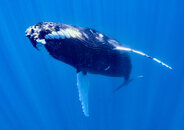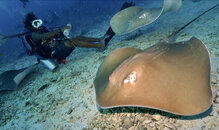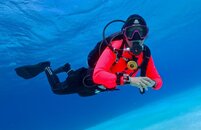Great answers - Thank you!
My wife has a G7XII. It is nearly useless for macro without additional wet lenses. and useless for wide-angle without carrying around a wet dome. And it is useless for ambient light without ISOs that are toom high for comfort.
When I compared the g7xII and g7xIII the 3 won out on a number of fronts. I also concluded that I really need to have a dome if I'm going to do another P&S. Ikelite's 6 inch dry dome looks promising. Reviews on several sites indicated that the 200mm zoom on the Sony could be a challenge if you wanted the ability to shoot wide angle and macro on the same dive. The 100mm on the Canon was seen as being more versatile. As with all things, there are tradeoffs.
Mixed. For most it was too big a jump in complexity, size, and cost. M4/3 was a better step-up.
4/3 is something I'll watch. One of the interesting discoveries to come out of this is learning that Canon has killed the 5D. There will not be a 5DV. They have moved on to mirrorless, which really makes sense when you take into account everyone uses the preview screen instead of the viewfinder.
Seems like DL is the future, if you are committed to Ikelite. Many have gone to Nauticam to upgrade from Ikelite.
Agree on DL. It seems like a better system. Nauticam seemed like a quantum leap in cost over Ikelite. Realistically, I don't get as much dive time as I wish I did. Local diving is all cold spring fed mud-holes for the most part. We have one sand pit that is mostly clear until the OW classes get in and churn the sediment. Past that it's rig diving in the Gulf way out, a boat trip to Flower Gardens, or travel. I've always chosen travel for a variety of reasons. I would like to check out Flower Gardens but the chips have never lined up on those trips. Chips are time to do it, money to do it, trips available and weather cooperative.
Depends on where you are traveling. Hardcase definitely if you are checking it.
I think one should always plan on having your equipment checked involuntarily. You may plan to carry it on and find the overhead bins full at which point you are getting a free bag check. Airlines have become this cross between a bus with wings and customer service from hell. "Yes sir, welcome to Satan Air. We will be flying over water today, would you like to upgrade to a seat with a life preserver for $9.99 each way?"
Absolutely. Won't dive without it anymore. It does more than check the cases; it also preloads the o-rings, so there is less chance of water intrusion when you enter the water.
I was very pleasantly surprised to see the vacuum system. It just makes way more sense than cramming moisture munchers in the case and saying a prayer. I do like the alert system that a previous diver mentioned. But it's 30mm which is 1.25 inches for my fellow luddites in America.
Backscatter had a moisture alert system which is cute... but it should be possible to do a vacuum alert system without a hole in the case. That's another rabbit hole, but suffice to say the chips are $2-$3 to monitor barometric pressure.











